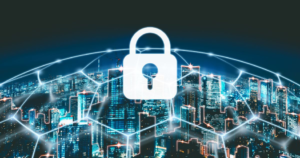
The importance of robust identity and access management (IAM) strategies in today’s digital landscape cannot be overstated. With the evolving threat landscape presenting increasingly sophisticated challenges, organizations must provide important security procedures to protect sensitive data and mitigate the security risk of unauthorized permission management access.
At the heart of this security is Multi-Factor Authentication (MFA), a key feature that goes beyond traditional password-based methods by adding additional security. This article aims to highlight the critical role of MFA in the organization of security-enhancing and security-ensuring systems and user access keys to necessary information.
Keep reading as we explore why MFA is so popular and discuss IAM best practices for implementation, and outline key considerations for seamless integration with your IAM infrastructure.
Understanding the Role of MFA in Identity and Access Management (IAM)
Integrating Multi-Factor Authentication (MFA) into the Identity and Access Management (IAM) domain is a crucial way to strengthen security infrastructure. MFA requires users to go through multiple processes verifying their identity before acquisition, which is essential for MFA to enhance the security mechanisms, although one element is compromised.
Working on diversifying authentication mechanisms, the MFA incorporates various credentials such as passwords, biometric data, and tokens to ensure that only the required permissions can access data, which is important and reinforces the organization’s security measures. MFA is indispensable in modern cybersecurity, protecting against evolving threats and preserving data integrity.
IAM Best Practices: Integrating MFA for Enhanced Security
The imperative to fortify security measures is paramount in today’s digital landscape. Multi-factor authentication (MFA) is a formidable tool, erecting an additional barrier against unauthorized access and potential data breaches.
Integrating MFA into your Identity and Access Management (IAM) framework represents a strategic maneuver toward bolstering the integrity of your digital infrastructure. By requiring unauthorized users to furnish multiple verification forms, MFA acts as a sentinel, diligently safeguarding sensitive assets from nefarious actors.
One of the salient features of MFA lies in its capacity to augment security without inducing undue complexity or inconvenience for end-users. Integrating MFA protocols into your existing IAM solution can fortify defenses while preserving user experience.
In operationalizing MFA, the deliberate selection of authentication methods is paramount. Whether through SMS codes, biometric authentication, or hardware tokens, the chosen modality should align with organizational requirements and user preferences.
Moreover, effective implementation of MFA necessitates comprehensive user education initiatives. Organizations can make everyone more security savvy by showing why Multi-Factor Authentication (MFA) matters and offering helpful tips.
Keeping an eye on MFA settings and tweaking them regularly is key to strengthening your security. Organizations can spot and tackle new threats early by staying alert and being ready to adapt.
In short, adding Multi-Factor Authentication to your Identity and Access Management (IAM access analyzer) plan is a big step in beefing up your defenses and cutting down on cyber risks. Balancing security with user-friendliness helps keep your digital stuff safe and keeps everyone’s trust intact in today’s connected world.

The Evolution of Access Management
In the annals of access control management, reliance on passwords stood as the cornerstone of user authentication. Nevertheless, confronted with the escalating specter of cyber threats and rampant data breaches, this conventional approach has conspicuously failed to uphold security protocols.
In response to this paradigm shift, organizations have discerned the inherent limitations of password-centric systems. Consequently, a discernible trend has emerged toward incorporating Multi-Factor Authentication (MFA) within their Identity and Access Management (IAM) frameworks.
The advent of MFA heralds a marked enhancement in security provisions by imposing an additional stratum of authentication requisites upon users. These prerequisites, from traditional passwords to biometric identifiers and specialized security tokens, fortify the digital perimeter against unauthorized ingress. This evolution augments the resilience of access management protocols, thereby proffering heightened protection for sensitive data assets and facilitating the attendant risks associated with illicit access attempts.
How MFA Strengthens Access Control and Security Measures
Enhancing Access Control
In delving into the augmentation of our access control mechanisms, it is imperative to understand the efficacy of Multi-Factor Authentication (MFA). MFA stands as a stalwart guardian, demanding more than mere passwords for entry. Much like a vigilant sentry scrutinizing identification and supplementary credentials, MFA fortifies our defenses, rendering unauthorized access arduous.
Boosting Security Measures
Integrating MFA into our Identity and Access Management (IAM) paradigm emerges as a paramount strategy when discussing the fortification of security measures within our organizational framework. It transcends the rudimentary locking of doors, akin to encasing every facet of our infrastructure with additional layers of protection.
With MFA, authentication extends beyond the conventional password, encompassing mobile devices, security tokens, and biometric markers. It epitomizes establishing a stringent verification process akin to an exclusive protocol for gaining access to privileged domains.
Mitigating Risks
Consider the scenario wherein MFA stands as our bulwark against potential risks and threats. In the face of adversarial attempts, perpetrators encounter formidable obstacles. No longer can they breach our defenses with the mere knowledge of a password; they are confronted with the demand for multifaceted authentication.
Moreover, this paradigm shift is akin to fortifying our stronghold with impenetrable barriers, preempting breaches before they materialize. MFA emerges not as a reactionary measure but as a proactive strategy, safeguarding our invaluable data assets.
Restrict Access Effectively with MFA in Your IAM Strategy
Multi-Factor Authentication (MFA) is fortifying digital security protocols. MFA transcends conventional password safeguards, akin to employing a discerning sentry who verifies multiple credentials before granting access to restricted domains.
What does an MFA entail precisely? Consider this scenario: Besides entering a password, one must authenticate via biometrics and input a unique, time-sensitive code dispatched to their designated device. This amalgamation of authentication factors erects a formidable barrier against unauthorized infiltration, enhancing overall security posture significantly.
Now, let us deliberate upon the paramountcy of integrating MFA within the realm of Identity and Access Management (IAM). Envision an organizational landscape brimming with invaluable assets and confidential data repositories. Safeguarding these digital treasures mandates stringent access controls to thwart unauthorized ingress.

Challenges in Implementing MFA for Access Management
User Resistance: One significant hurdle encountered in implementing Multi-Factor Authentication (MFA) is user resistance. This resistance stems from the perceived inconvenience and time-consuming nature of additional authentication steps, such as inputting a code from their mobile device or engaging in biometric authentication methods. Understandably, users may find these supplementary measures more manageable, potentially impeding their willingness to embrace MFA practices.
Integration Complexity: Another formidable challenge lies in the complexity associated with integrating MFA into existing systems. With diverse devices, platforms, and applications to account for, ensuring the seamless implementation of MFA across the organizational infrastructure presents a daunting task. The intricacies of harmonizing MFA with the various technological landscapes demand meticulous planning and execution to achieve optimal functionality without disruption.
Cost Considerations: Implementing MFA entails notable financial investment and resource allocation costs. Organizations must procure suitable technologies, allocate resources for user training initiatives, and earmark funds for ongoing maintenance and support of the MFA system. The financial outlay and resource commitments necessitated by MFA implementation underscore the importance of strategic planning and prudent resource management to mitigate financial strain and maximize operational efficiency.
Future-Proofing Your IAM Strategy with MFA Solutions
In the dynamic realm of cybersecurity, threats constantly evolve, requiring organizations to be vigilant to strengthen their defenses. Multi-factor authentication (MFA) is integral to Identity Access Management (IAM). It provides additional security beyond passwords When a password is like the outer walls of a fortress, it is easy to use.
MFA works as a secured moat and a drawbridge, as this added security, enhanced with biometric authentication, prevents unauthorized access attempts, creating critical data and systems protection from harm. As data protection laws tighten, MFA approval becomes necessary to ensure compliance and strengthen anti-breach protection. Strict MFA accreditation ensures the integrity and confidentiality of user data.
Similar Posts:
- Securing Your Digital Identity: How Biometric Technology and Identity Theft Protection Services Intersect
- Streamlining Security: The Power of Password Managers
- Beyond Antivirus: Next-Gen Strategies to Safeguard Your Windows PC
- Hacker-Proof Casinos: How Cybersecurity Defends Online Gaming in Canada
- Safe and Sound: How Touch ID and Biometric Security Enhance Online Casino Transactions
- Protonmail: How To Enable Two-factor Authentication?
- Should Users Be Forced To Reset Their Passwords Regularly?
- Slack: How To Enable Two-factor Authentication?
- Security Settings To Keep Your Android Device Safe?
- Slack: How To Require Two-factor Authentication For Your Workspace?